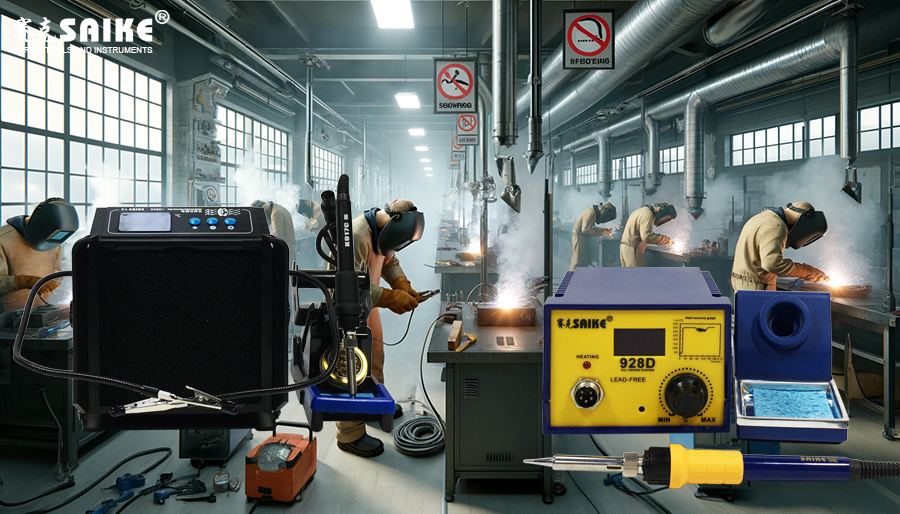
SK-YJ000HT-KP 100036
Welding fume generated during the welding process contains various harmful substances, and long-term or excessive inhalation of these fumes poses serious threats to the health of welders. These fumes may include metal oxides, organic gases, and other toxic compounds that can lead to respiratory diseases, neurological problems, and even cancer. This article will delve into the hazards of welding fume from welding stations and its protective measures to help welding workers and environmental safety managers take effective actions to protect their health.
I. Hazards of Welding Fume
1.Respiratory Effects
The tiny particles in welding fume can be inhaled into the lungs, causing various respiratory issues, including but not limited to bronchitis, bronchiolitis, and pulmonary fibrosis. Workers who are chronically exposed to welding fume may also develop more severe conditions such as occupational asthma or chronic obstructive pulmonary disease (COPD).
2.Nervous System Damage
Certain chemicals in welding fume, such as manganese, are neurotoxic and can cause welding workers to experience memory loss, muscle weakness, or other neurodegenerative symptoms, a condition known as “welder’s Parkinson’s disease.”
3.Cancer Risk
Some studies have shown that carcinogens in welding fume, such as cadmium, chromium, and nickel, may increase the risk of lung cancer and other types of cancer.
II. Protective Measures
1.Engineering Controls
– Local Exhaust Ventilation (LEV): Installing an effective local exhaust ventilation system at the welding station can capture fume and gases directly at the source, preventing them from spreading into the workshop air.
– Improved Workstation Design: Designing the workstation to maximize natural ventilation and ensuring that air flow always directs contaminants away from the worker’s breathing zone.
2.Personal Protective Equipment (PPE)
– Respiratory Protection: When exposure levels cannot be adequately reduced through engineering controls, workers should be equipped with appropriate respiratory protective equipment. Depending on the exposure level, it may be necessary to use simple dust masks to full-face air-purifying respirators.
– Protective Clothing and Eyewear: Wearing protective clothing and safety glasses prevents direct contact of harmful substances with the skin and eyes.
3.Work and Behavioral Measures
– Regular Training: Regularly conducting health and safety training for employees to enhance their awareness of the hazards of welding fume and teach them how to use PPE and other protective equipment.
– Job Rotation: Implementing a job rotation program to reduce long-term exposure of individual workers to high-risk environments.
– Smoking and Eating Prohibition: Prohibiting smoking and eating in the work area to avoid ingestion of harmful substances.
4.Environmental Monitoring and Health Checks
– Regular Monitoring: Conducting regular air quality monitoring in the work environment to ensure the effectiveness of control measures.
– Health Monitoring: Providing regular health checks for welding workers to detect any health issues that may arise from occupational exposure.
III. Conclusion
Although welding at welding stations is a common industrial activity, the fume it generates contains various harmful substances that pose serious threats to workers’ health. By implementing comprehensive engineering controls, using PPE, adopting appropriate work and behavioral measures, and performing environmental and health monitoring, these risks can be significantly reduced, protecting the health and safety of welding workers. Managing welding fume is an essential component of any responsible manufacturing or maintenance operation.


